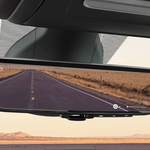The Chevorlet Experimental Research Vehicles (CERVs) and Aerovette planted the seeds for a mid-engine design Corvette.
The mid-engine design for Corvette finally came to reality on July 18 in Tustin, California.
The dream began with Zora Arkus-Duntov, considered the father of Corvette. Born in Russia in 1909, he immigrated with his family to Berlin, Germany. While in Berlin, Arkus-Duntov earned an engineering degree from Charlottenburg Technical University.
Duntov would go on to be an auto racer and engineering consultant in the automotive and aeronautics fields. He started with GM on May 1, 1953.
Zora Arkus-Duntov transformed the Corvette from a stylish sports-car into a legendary high-performance machine. ~ Automotive Hall of Fame
Duntov pursued the mid-engine layout through various concepts, including the CERV I, which debuted in 1960. Duntov described it as “a design without limit” and an “admirable tool” to instruct Chevy on “what to put in Corvette.”
He saw the mid-engine layout with the engine located ahead of the rear axle as the optimal configuration for weight distribution, excellent handling and forward visibility.
Despite the layout’s innate performance benefits, its implementation in the scheme of mass manufacturing proved problematic. The previous mid-engine Corvettes were relegated to concept status by issues including engine cooling difficulties, limited passenger and luggage space, loudness and the inability to produce a convertible variant.
From Experimental Concept Car to an Iconic Production Automobile
CERV I was outfitted with seven different engine combinations in its working lifespan, but its original engine, a Chevrolet Small Block V-8, and its lightweight aluminum core are both modernized on the 2020 Corvette Stingray.
In 1964, Duntov’s team debuted CERV II, which Duntov and Chevrolet General Manager Semon “Bunkie” Knudsen envisioned as a challenger at Sebring, Le Mans and other races. With torque converters in the front and rear, CERV II employed the first-ever mid-engine four-wheel-drive system, for which Duntov held the patent.
The most recent attempt at a mid-engine vehicle was the 1990 CERV III concept built in conjunction with Lotus to explore future levels of performance.
CERV III, more of a road car than a track performer, was intended as a development vehicle to evaluate mid-engine structures. CERV III was powered by a 5.7L, 32-valve dual overhead cam Small Block V-8 with twin turbochargers. It produced 650 hp and 655 lb-ft of torque.
![banner right]()
![banner right]()














